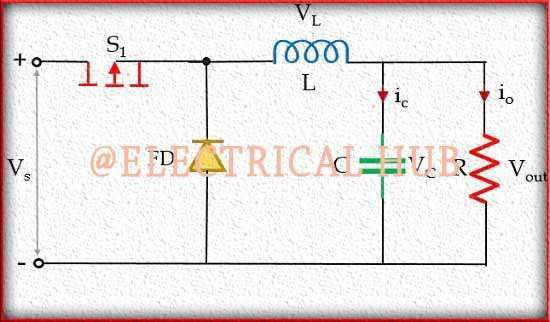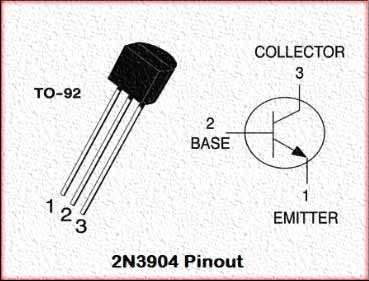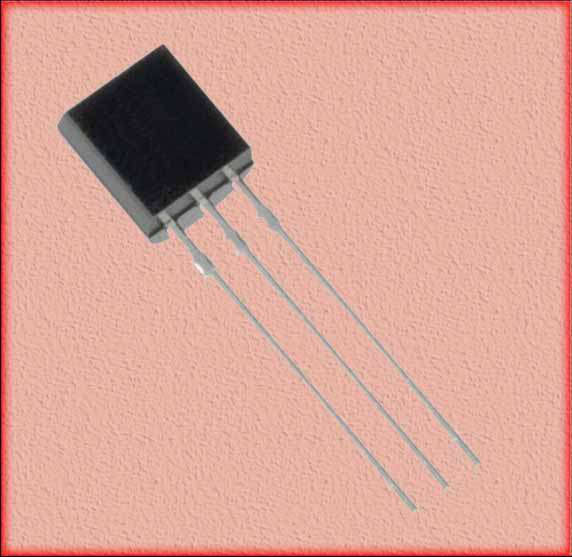Fading and Attenuation in Wireless Communication
In the ever-evolving world of wireless communication, two phenomena play crucial roles in signal degradation: fading and attenuation. While these terms are often used interchangeably, they represent distinct concepts that significantly impact the quality and reliability of wireless transmissions. This article delves into the intricacies of fading and attenuation in wireless communication, exploring their differences, causes, and implications for modern telecommunication systems.

Table of Contents
The Fundamentals of Fading and Attenuation in Wireless Communication
At its core, wireless communication relies on the transmission of electromagnetic waves through the air. As these waves travel from the transmitter to the receiver, they encounter various obstacles and environmental factors that can weaken or distort the signal. This is where fading and attenuation come into play, each affecting the signal in unique ways.
Attenuation: The Steady Decline
Attenuation refers to the gradual loss of signal strength as it propagates through a medium. In wireless communication, this medium is typically the atmosphere. As radio waves travel, they naturally lose energy due to factors such as distance, atmospheric absorption, and interaction with physical objects. This loss of signal strength is predictable and can be calculated based on known parameters.
The primary cause of attenuation is the inverse square law, which states that the signal strength decreases proportionally to the square of the distance from the source. For example, if you double the distance between a transmitter and receiver, the signal strength will decrease by a factor of four. This predictable nature of attenuation allows engineers to design wireless systems with appropriate power levels and receiver sensitivities to maintain reliable communication over specified distances.
Fading: The Unpredictable Fluctuations
Fading, on the other hand, refers to the rapid fluctuations in signal strength over time or distance. Unlike attenuation, fading is a more complex and often unpredictable phenomenon. It occurs due to the multipath propagation of radio waves, where signals reach the receiver through multiple paths with varying delays and phase shifts.
The multipath effect is caused by reflections, diffractions, and scattering of radio waves as they interact with buildings, terrain, and atmospheric conditions. As these multiple signal components combine at the receiver, they can either reinforce or cancel each other out, leading to rapid variations in signal strength. This results in the characteristic fading patterns observed in wireless communications.
To truly appreciate the difference between fading and attenuation, it’s essential to explore their technical aspects in greater detail.
Attenuation Characteristics
Attenuation is generally expressed in decibels (dB) and is a function of frequency, distance, and the properties of the propagation medium. The attenuation coefficient, measured in dB/km, quantifies the rate at which signal strength decreases over distance. Higher frequencies typically experience greater attenuation due to increased absorption by atmospheric gases and precipitation.
In wireless communication systems, engineers use path loss models to predict attenuation. These models take into account factors such as terrain, urban density, and climatic conditions to estimate the expected signal loss over a given distance. Common path loss models include the Free Space Path Loss (FSPL) model, the Okumura-Hata model, and the COST-231 Hata model, each tailored for specific environments and frequency ranges.
Fading Phenomena
Fading is a more complex phenomenon with several classifications based on its characteristics:
1. Slow fading vs. Fast fading: Slow fading occurs when the coherence time of the channel is large compared to the delay constraint of the channel. Fast fading happens when the coherence time is small relative to the delay constraint.
2. Flat fading vs. Frequency-selective fading: Flat fading affects all frequency components of the signal equally, while frequency-selective fading impacts different frequency components differently.
3. Rayleigh fading vs. Rician fading: Rayleigh fading occurs in non-line-of-sight scenarios where there is no dominant signal component. Rician fading applies to situations with a strong line-of-sight component alongside weaker multipath components.
Understanding these fading types is crucial for designing robust wireless communication systems that can mitigate their effects.
Mitigating Fading and Attenuation in Wireless Communication
Given the significant impact of fading and attenuation on wireless communications, engineers have developed various techniques to combat these phenomena:
Countering Attenuation
To overcome attenuation, wireless systems employ several strategies:
1. Increased transmit power: By boosting the initial signal strength, the effects of attenuation can be partially offset. However, this approach is limited by regulatory constraints and power consumption concerns.
2. Antenna design: High-gain antennas can focus the transmitted energy in specific directions, effectively increasing the signal strength along the desired path.
3. Repeaters and relays: For long-distance communications, intermediate stations can be used to receive, amplify, and retransmit signals, effectively extending the range of the system.
4. Adaptive modulation and coding: By adjusting the modulation scheme and coding rate based on channel conditions, systems can maintain reliable communication even as attenuation varies.
Combating Fading
Mitigating the effects of fading requires more sophisticated techniques:
1. Diversity techniques: By using multiple antennas or frequencies, diversity schemes can exploit the uncorrelated nature of fading across different paths or frequency bands.
2. Equalization: Advanced signal processing techniques can compensate for the distortions introduced by multipath fading.
3. OFDM (Orthogonal Frequency Division Multiplexing): This modulation technique divides the signal into multiple narrowband subcarriers, each experiencing relatively flat fading, making it easier to equalize.
4. Adaptive arrays: Smart antenna systems can dynamically adjust their radiation patterns to maximize signal strength and minimize interference.
The Impact on Modern Wireless Systems
Understanding the differences between fading and attenuation is crucial for the design and optimization of modern wireless communication systems. From 5G networks to satellite communications, engineers must account for both phenomena to ensure reliable and high-quality transmissions.
In 5G systems, for example, the use of millimeter-wave frequencies introduces new challenges in terms of attenuation, as these high-frequency signals are more susceptible to atmospheric absorption and rain fade. Simultaneously, the dense urban environments where 5G is often deployed create complex multipath scenarios, leading to severe fading effects.
Satellite communications, on the other hand, must contend with the vast distances involved, resulting in significant attenuation. Additionally, the movement of satellites relative to ground stations introduces Doppler effects and time-varying fading patterns that must be carefully managed.
Conclusion: Navigating the Complexities of Wireless Propagation
In conclusion, while both fading and attenuation in wireless communication contribute to signal degradation, they represent distinct challenges that require different mitigation strategies. Attenuation, with its predictable nature, can be addressed through careful system design and power management. Fading, being more variable and complex, necessitates advanced signal processing techniques and adaptive systems to maintain reliable communications.
As wireless technologies continue to evolve, pushing into higher frequency bands and more complex environments, the ability to effectively manage both fading and attenuation will remain crucial. By understanding the unique characteristics of these phenomena, engineers can develop more robust, efficient, and reliable wireless communication systems that meet the ever-growing demands of our connected world.
Comparison Table: Fading vs. Attenuation in Wireless Communication
| Aspect | Fading | Attenuation |
| Definition | Variation in the signal strength over time or space due to factors like reflection, diffraction, and scattering. | The reduction in signal strength as it propagates through a medium (air, walls, etc.). |
| Causes | Multipath propagation (reflections, scattering), Doppler shifts, interference, weather conditions, mobility of users. | Distance between transmitter and receiver, obstacles (buildings, walls), absorption by the medium, free-space loss. |
| Types | – Small-scale fading (Rapid changes in signal amplitude and phase over short distances) – Large-scale fading (Signal variation over longer distances) | – Path loss attenuation – Absorption attenuation (due to environment, objects) |
| Time Dependency | Time-dependent; signal strength fluctuates dynamically. | Generally time-independent; decreases steadily as distance increases. |
| Frequency Dependency | More significant at higher frequencies (e.g., 5G, mmWave) due to multipath effects. | Occurs across all frequencies but more prominent at higher frequencies due to greater absorption and free-space loss. |
| Impact on Signal | Rapid fluctuations in amplitude, phase, and frequency, leading to signal distortion. | Continuous weakening of signal strength, resulting in lower signal-to-noise ratio (SNR). |
| Compensation Techniques | – Diversity techniques (antenna diversity, frequency diversity) – Equalization – Channel coding | – Amplification – Use of repeaters – Power control |
| Typical Environments | Urban areas with buildings, moving vehicles, and multipath environments. | Any communication path, especially over long distances or with significant obstacles. |
| Effect on Data Transmission | Can cause data loss or corruption due to sudden dips in signal strength. | Can reduce overall data throughput and increase latency due to weaker signals. |
Worth Read Posts
- Power Transformer Testing
- Power Transformer Parts
- Hysteresis Loss and Eddy Current Loss
- Derivation of Hysteresis Losses
- Transformers: Important Types, Features & Components
- Transformer Tests Before Commissioning
- Transformer Electrical Interview
Follow us on LinkedIn, “Electrical Insights,” to get the latest updates on electrical engineering.





I went over this site and I believe you have a lot of fantastic information, saved to fav (:.
What’s up every one, here every one is sharing these kinds of knowledge,
thus it’s nice to read this weblog, and I used to pay a quick visit this web site daily.